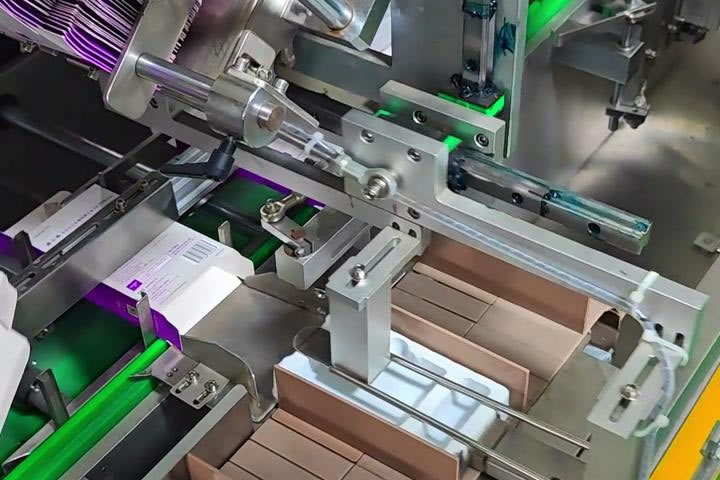Last week, I went to a condiment factory in the south to do an equipment return visit. I saw their production supervisor give me a thumbs up through the workshop glass. You know, when we first met half a year ago, the person in charge had a frown that could hold a pen cap - at that time, their production line was being tortured by e-commerce orders.
The story started last fall. The customer mainly produces small-package seasonings, which were originally packed manually. When there was a big promotion, there was no time for temporary worker training. What's more troublesome is that their gift box combination changes every few days: today it's a combination of star anise and cinnamon, and tomorrow it's changed to chili powder with pepper oil. Every time the line is changed, it takes most of the day to adjust the equipment.
"I took a big gamble to use your automatic packaging machine." The production manager still slaps his thigh when talking about it now. At that time, we suggested keeping the original conveyor belt and only modifying the packaging section. On the day the equipment arrived, the old masters kept muttering around the new machine: "Can this iron thing tell the difference between star anise and chili powder?"

As a result, the "really fragrant" scene was staged on the first day of the start-up. We mixed 20 different specifications of material bags on the conveyor belt, and the visual recognition system of the automatic packaging machine sorted out the target products like an old chef picking ingredients. The most amazing thing is that when the octagonal bag mouth is not folded neatly, the mechanical gripper will actively switch to the "gentle pinch and slow release" mode, completely replicating the delicate movements of manual packaging.
You may ask: What should I do if the specifications are changed frequently? Last month, they received an overseas order to change the 100g package to a 50g*2 gift box. In the past, it would take at least two hours to adjust the equipment. Now our automatic packaging machine directly calls the pre-stored solution. The debugger swipes on the touch screen a few times and switches the production line mode in ten minutes. The workshop director later told me that no matter how tricky the packaging solution is, he can stand up straight.
What impressed me most was the "extreme test" last month. The customer received a live broadcast order temporarily, requiring liquid seasoning packets and powdered seasoning cans to be mixed in the same gift box. This kind of mixed soft and hard packaging problem is easy to get stuck even for imported equipment. But our automatic packaging machine relies on flexible adaptation technology to automatically adjust the gripping force - glass jars use vacuum suction cups, and soft packaging is changed to side clamping, and the whole process passes without damage.
During a recent return visit, I found an interesting phenomenon: the old quality inspector who was originally most resistant to automation now squats next to the equipment every day to "learn from others". It turned out that he found that the intelligent error correction function of the automatic packaging machine was more toxic than the human eye. Once, a bag with a leaked seal was mixed into the conveyor belt. The equipment not only accurately removed it, but also automatically rechecked the same batch of products three times. In the words of the old master: "This is not a machine, it is clearly a model worker who does not want a salary!" Before leaving, the customer revealed a data: since the automatic packaging machine was installed, the error rate of their gift boxes has dropped from the industry average to an almost negligible level. What makes me even more gratified is that the "equipment failure record book" posted on the wall of the workshop has not been added for three months. Standing in the brightly lit workshop, watching the silver-white robotic arm flying up and down tirelessly, I suddenly remembered the rainy night during the debugging stage. At that time, in order to overcome the problem of grabbing special-shaped packaging boxes, we stayed up for three nights to repeatedly adjust the dynamic compensation parameters. Now think about it, the hair that was grabbed has turned into a smooth beat on the customer's production line. If you are also worried about mixed packaging of multiple specifications, or are trapped by the curse of line change and shutdown, you should really take a look at our automatic packaging machine. It may not say nice things, but it can definitely improve the efficiency of the production line and give you a satisfactory answer.

